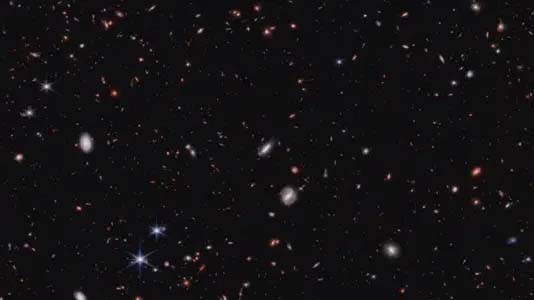Telescope discovers galaxies that point to an alternative to dark matter

Science: A group of astronomers analyzing data from the James Webb Space Telescope (JWST) say some of the oldest galaxies in our universe appear much larger and brighter than expected, suggesting they formed early and grew rapidly — possibly without the influence of dark matter. According to the researchers, the findings provide new clues that point to an alternative to dark matter known as modified Newtonian dynamics, or MOND. “The expectation was that all the large galaxies we see in the nearby universe would have started from these tiny pieces,” Stacy McGough, an astrophysicist at Case Western Reserve University in Ohio, said in a statement. “What the theory of dark matter predicted is not what we see.” The orderly hierarchical evolution of galaxies, which is thought to be driven by cold dark matter and which is a key component of the standard cosmic model of our universe, is widely accepted because it explains the diverse shapes and sizes of galaxies scattered across the universe. Still, the JWST has not yet seen the faint signals that were expected to emanate from those small, primitive fragments of galaxies in the early universe, McGough and his colleagues say. Instead, the telescope’s data show that early galaxies were larger and more luminous than anticipated, even when the team looked further back in time. The researchers argue that these galaxies grew too big, too quickly — far beyond the expectations set by traditional cold dark matter models.





